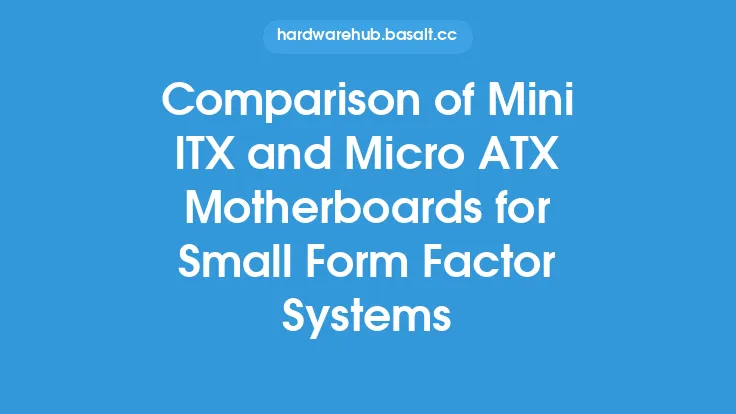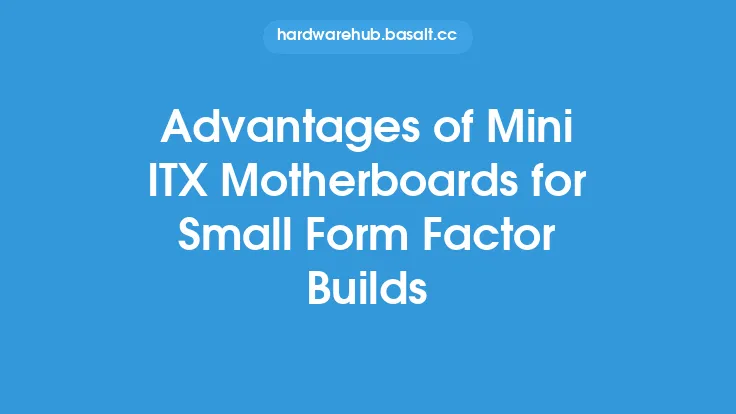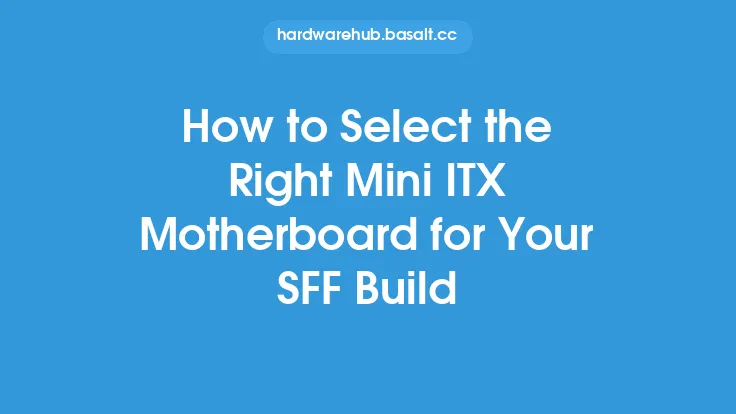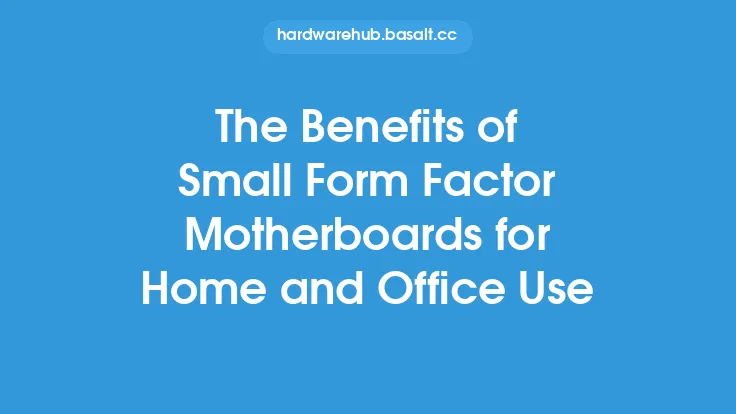When it comes to building small form factor (SFF) systems, Mini ITX motherboards are a popular choice among enthusiasts and system builders. These compact motherboards offer a range of benefits, including reduced size, lower power consumption, and increased portability. However, like any other technology, Mini ITX motherboards also have their limitations and challenges. In this article, we will delve into the details of these limitations and challenges, exploring the technical aspects and implications for system builders.
Introduction to Mini ITX Motherboard Limitations
Mini ITX motherboards are designed to be compact, with a standard size of 6.7 inches (17 cm) square. This reduced size limits the number of features and components that can be included on the board. One of the primary limitations of Mini ITX motherboards is the reduced number of expansion slots, which can make it difficult to add multiple graphics cards, sound cards, or other peripherals. Additionally, the compact size of Mini ITX motherboards can also limit the number of USB ports, SATA ports, and other connectors, which can make it difficult to connect multiple devices.
Power Delivery and Cooling Challenges
Mini ITX motherboards also face power delivery and cooling challenges. The compact size of these motherboards can make it difficult to deliver power to all components, particularly high-power components like graphics cards and CPUs. This can result in reduced system performance, increased temperatures, and decreased system reliability. Furthermore, the reduced size of Mini ITX motherboards can also limit the amount of cooling that can be applied to the system, which can lead to increased temperatures and reduced system lifespan.
Component Selection and Compatibility
Another challenge faced by Mini ITX motherboards is component selection and compatibility. The compact size of these motherboards requires careful selection of components, including CPUs, memory, and storage devices. Components must be chosen to ensure compatibility with the motherboard and to minimize interference with other components. Additionally, the reduced size of Mini ITX motherboards can also limit the number of components that can be installed, which can make it difficult to build a system with multiple components.
Overclocking and Tuning Limitations
Mini ITX motherboards also have limitations when it comes to overclocking and tuning. The compact size of these motherboards can make it difficult to apply extreme cooling methods, such as liquid nitrogen or dry ice, which are often used to achieve high overclocks. Additionally, the reduced power delivery capabilities of Mini ITX motherboards can also limit the amount of overclocking that can be achieved, as high-power components may not be able to receive the power they need to operate at high frequencies.
Signal Integrity and Noise Challenges
Mini ITX motherboards also face signal integrity and noise challenges. The compact size of these motherboards can make it difficult to maintain signal integrity, particularly at high frequencies. This can result in reduced system performance, increased errors, and decreased system reliability. Furthermore, the reduced size of Mini ITX motherboards can also make it difficult to minimize noise, which can lead to reduced system performance and increased errors.
Design and Layout Considerations
When designing a Mini ITX motherboard, manufacturers must carefully consider the layout and design of the board. The compact size of these motherboards requires careful placement of components, including capacitors, inductors, and resistors. Additionally, the reduced size of Mini ITX motherboards can also limit the number of layers that can be used in the PCB, which can make it difficult to maintain signal integrity and minimize noise.
Manufacturing and Cost Challenges
Finally, Mini ITX motherboards also face manufacturing and cost challenges. The compact size of these motherboards requires specialized manufacturing techniques, which can increase the cost of production. Additionally, the reduced size of Mini ITX motherboards can also limit the number of components that can be installed, which can make it difficult to build a system with multiple components. Furthermore, the high demand for Mini ITX motherboards can also drive up costs, as manufacturers must balance the need for compact size with the need for high-performance components.
Conclusion
In conclusion, while Mini ITX motherboards offer a range of benefits, including reduced size, lower power consumption, and increased portability, they also have their limitations and challenges. These challenges include reduced expansion capabilities, power delivery and cooling challenges, component selection and compatibility issues, overclocking and tuning limitations, signal integrity and noise challenges, design and layout considerations, and manufacturing and cost challenges. By understanding these limitations and challenges, system builders can better design and build SFF systems that meet their needs and provide high performance, reliability, and efficiency.





